Montessori Marketing, Informatics, Branding, & Consulting since 2012.
Nullen’s History with Montessori
Written by Kyle Null
Last Updated: March 1st, 2022
Nullen’s origins are in Montessori schools. Helping schools is deeply fulfilling in general, and we have a huge soft spot for Montessori schools in particular. It’s where we got our start, and today we have deep experience with working with Montessori programs from top to bottom. We’re one of a handful of tech-oriented marketing firms in the country who deeply understand Montessori, from ethos to curriculum. We can help with building out tech programs, consulting to improve existing tech programs, attracting new students, using tech to help teachers connect to students in relevant ways, marketing & fund development initiatives, and more. This is the story of how that all started.
It’s a story of:
- starting as a 250-student school’s humble one-man IT department
- quickly growing into a computer lab, then forming another volunteer computer lab for foster children with a daunting $5,000 budget
- securing $250,000 worth of funding, software, and hardware on top of that modest budget
- developing the first informatics/technology Montessori curriculum in the country, and the only among them to be fully accredited
- weaving an interdisciplinary, holistic technology education program into an anti-technology environment
Like many stories, it starts humbly enough. When I started working for the Montessori Academy at Edison Lakes in Mishawaka, Indiana, zero Montessori schools had tech programs. I was hired on, simply enough, as an IT guy. I was to fix things in the most general sense. The teachers and administrative people needed computers, and I was there to do typical networking, server management, etc. With all of the routine IT work taken care of in short order, I recognized other immediate needs. The first was that the students had little to no access to technology whatsoever.
I began facilitating computer classes for the students. It went well, and the school awarded me a $5000 budget to build a humble computer lab to serve their 250 kids. I bought parts and built fifteen computers from scratch. I knew that if the $5000 budget was renewed annually, I could gradually upgrade the computers piece by piece, year by year. It was somewhat of a survivalist strategy, but that’s the same kind of strategy I’d been using since I was a teenager building custom PCs like hot rods. Working completely from scratch was a blessing, because I had the benefit of a blank slate.
There was such interest in my computer classes that I had to organize everything into a proper curriculum to keep things on track. This came together rapidly, and felt natural, effortless. Montessori schools have two conservative programs, AMI and AMS, and a more liberal program, MACTE. The former are fundamentally anti-technology. parents, lead teachers, head of school, and board saw what was happening at, they reviewed the curriculum and deemed it sufficiently legit to integrate into their submission for dual AMI and AMS accreditations. It was unprecedented, and a huge deal. I called it Montessori Informatics, which was partly based on my undergraduate Informatics degree. It grew into the perfect blend of analog and digital learning, and our emphasis from day one was to use technology to creatively solve real-life problems.
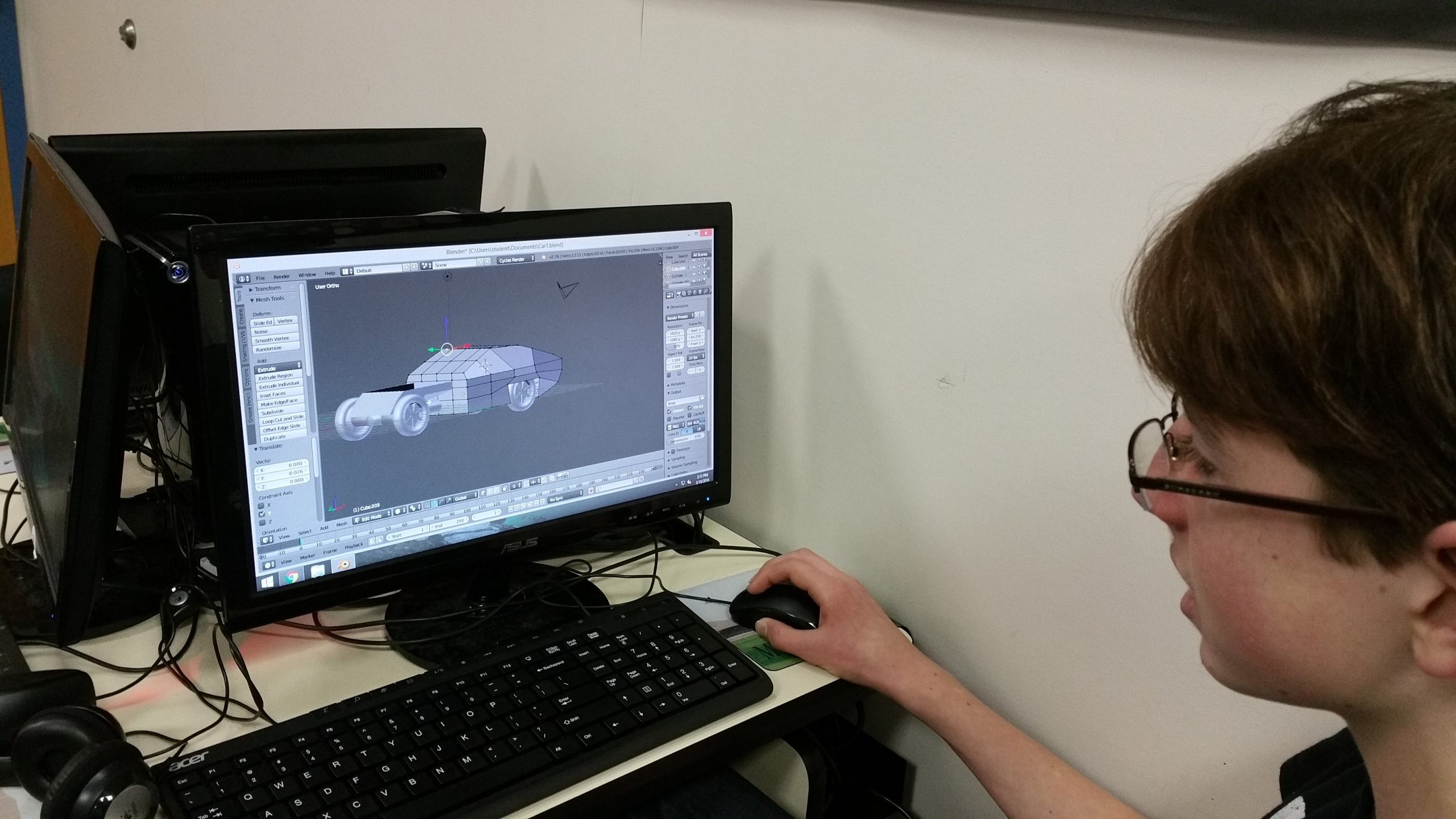
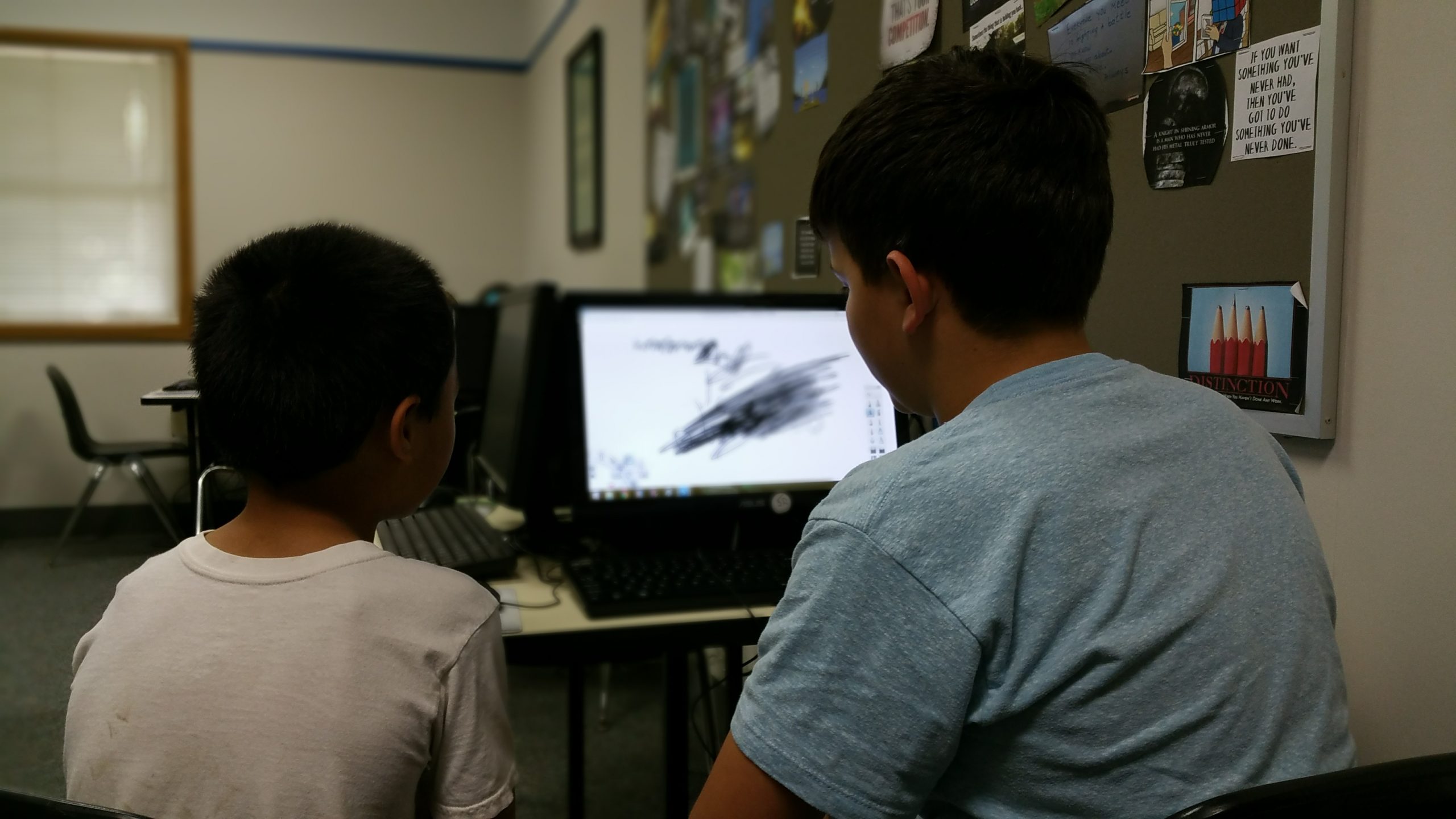
What’s great about Montessori is the classes are mixed ages. So when a young student shows early mastery they can work with the older students to advance further.
Meanwhile, I’d built another computer lab for the South Bend Boys and Girls Club, and was leading an afterschool program there for foster children as a volunteer. There I met an emissions testing business manager in Michigan who was required by law to entirely replace all of her technology hardware every two years. This led to the donation of seventy-five computers, four heavy-duty office grade printers, approximately $25,000 worth of ink, and enough miscellaneous hardware that we had to store the overflow in another room at school. I was personally driving U-Hauls to Michigan and back to pick this all up.
Now that the ball was really rolling, I focused on preparing my older kids for high school. I especially wanted the eighth graders to have laptops. So we ran a tech fundraiser, and that netted upwards of $30k for technology on top of what we’d already pulled together. My eighth graders got their laptops, and the rest of the students got a seriously upgraded lab. We installed a projector and connected everyone to a Google Chromecast so they could stream their class projects from their phones for the whole school to see. I had to petition the school’s board to allow the kids to carry their phones in school, and again, to the amazement of all, they approved it. At this point we felt unstoppable. I started enrolling in a plethora of Microsoft’s programs for free stuff for schools. Between our non-profit and educational status, we were getting approved for grants left and right. Microsoft gave us $25k of free software through TechSoup. People lost their minds.
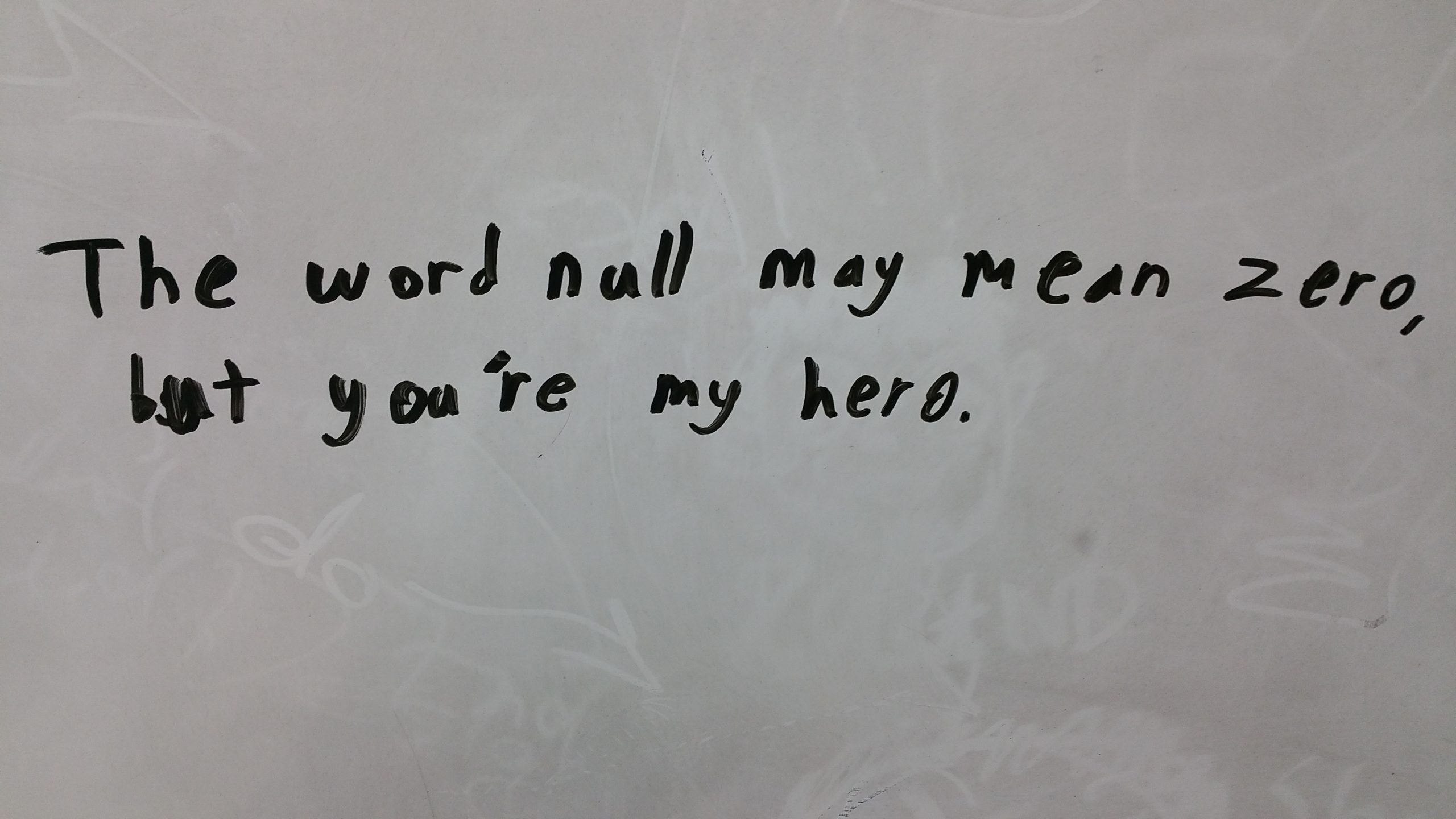
Students would draw and leave me messages on my dry erase board.
I got a lot of kudos for all of this. Many of my fellow teachers were extremely skeptical of me when I arrived, and they became allies. A significant percentage of the teachers had never really used computers, and I often found myself teaching them right next to the kids. There was a fifty-five year old teacher who had never once used a computer. I was teaching young and old alike the difference between a double and single click by making reference to the Little Caesar’s slogan, “Pizza Pizza!” The tech program, like Montessori programs in general, was mutli-disciplinary, and became highly synergistic. It brought us all together, and adding a technology component acted like a glue. It was the missing piece that made everything more immediately relevant to students for whom digital technology is a huge, inevitable, inescapable part of daily life.
In Montessori education, they famously teach kids how to hold chopsticks before they learn how to hold a pencil, and as a result they learn how to use pencils earlier than their non-Montessori peers. If you’re training kids how to use a pencil when they’re three, why not teach them how to use a keyboard and mouse, which they’ll probably end up using more of anyway? We had toddlers learning correct hand placement on computer keyboards without connecting them to a computer. I and other teachers would build our curricula around a monthly theme–say “outer space”–and foster connections between science, art, math, technology, etc. The focus, and what the administration loved, was on solving problems with technology, through a happy blend of digital and analog.
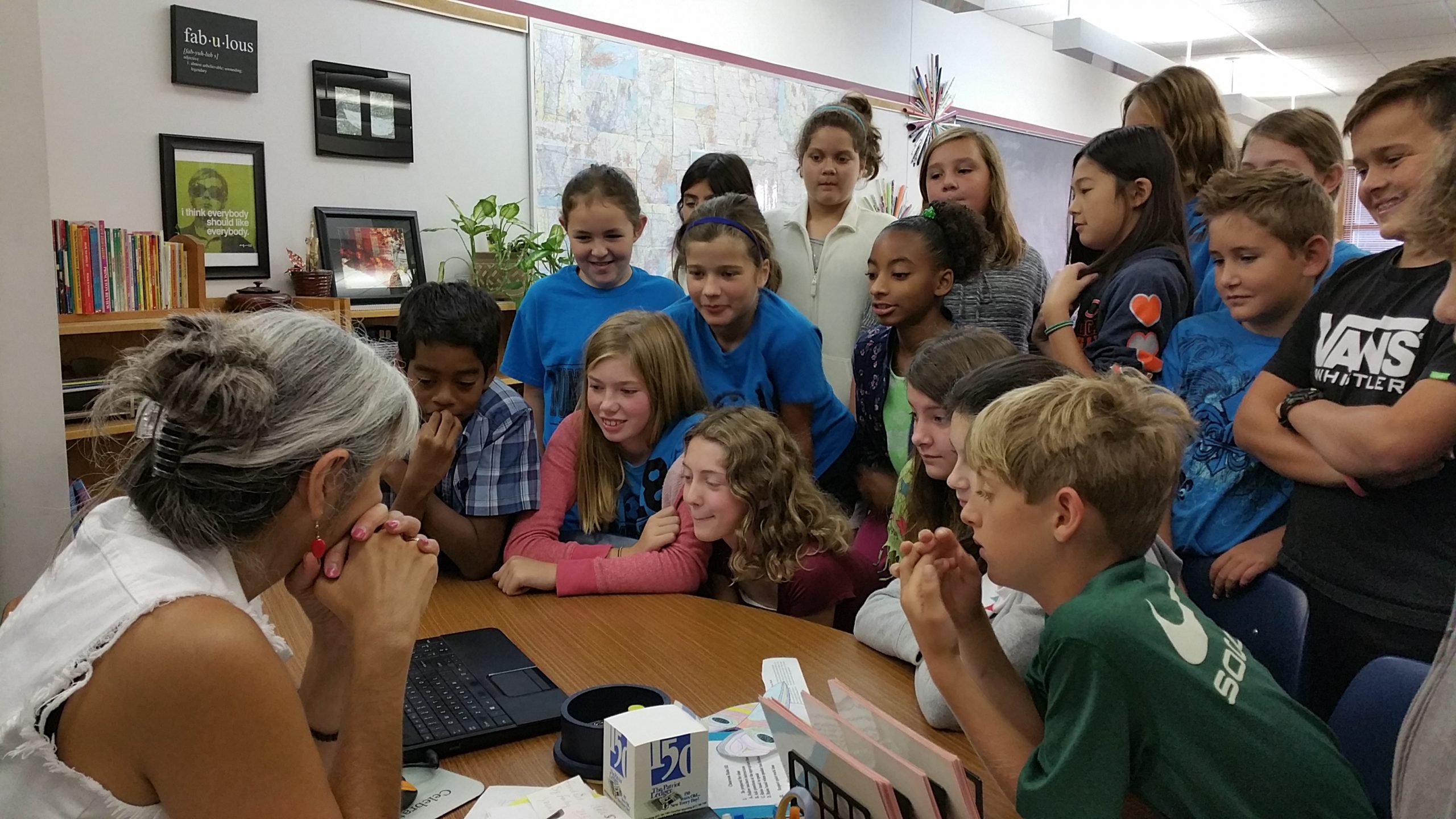
Students doing a video conference with a Montessori school from another country for the first time.
We branched into extracurriculars when I proposed an esports after-school program. 60% of my junior high students wanted in, and predictably, the parents didn’t get it. Parents generally don’t understand video games. Stereotypes abound, and it’s hard for a lot of people to see video games as having any potential relevance to real life. On the other hand, by now it’s a standard Hollywood plot device that sports coaches teach their players about life through sport. I wanted to try to do a similar thing through video games: teamwork, discipline, fulfilling a role, dealing with frustration and loss, managing difficult people. I also wanted to teach kids how to create and stream content. Being a streamer was just becoming an actual career; the first person to make a million dollars streaming was right around then.
I had to get up in front of the Montessori Board of Directors and give a presentation about esports. Everyone is still a little confused about esports today; people were profoundly confused by esports ten years ago. I had to explain: this is real, it’s a thing, and it’s more relevant to these kids’ lives than a chess or strategy club. The most important thing, and what won the board over, was teaching kids balance. It was about video games being a fun part of social life. Ultimately, the board let us form an after-school League of Legends club. To get that approved in the year 2013 was a huge deal.
Montessori schools are set up so that kids have a lot of time to literally roam around and gravitate towards what they’re interested in, and their educational programs are uniquely tailored towards the students as individuals. By setting up a tech lab, the kids who gravitated towards technology and previously had no outlet at school had a place to engage. We set up individual projects for them based on their interest and enthusiasm, whether their age was six or thirteen. I was able to see kids grow up. I’m still in touch with all of the kids I really reached and made a connection with, and am routinely rewarded by hearing my former students choosing their college majors based on a class they took with me in elementary or junior high.

My music production after school program. We spent the entire year “dropping an album”.
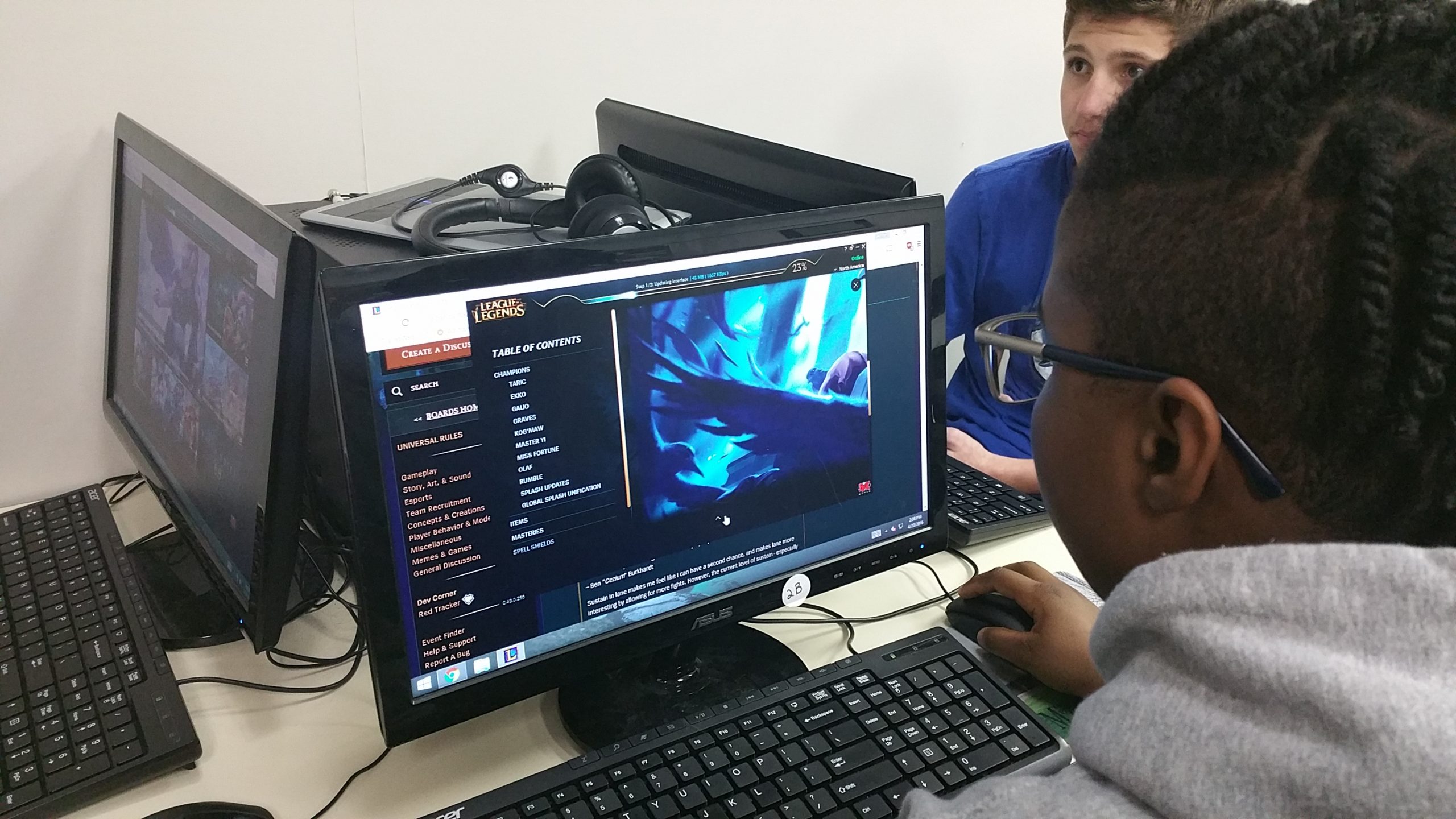
League of Legends Club
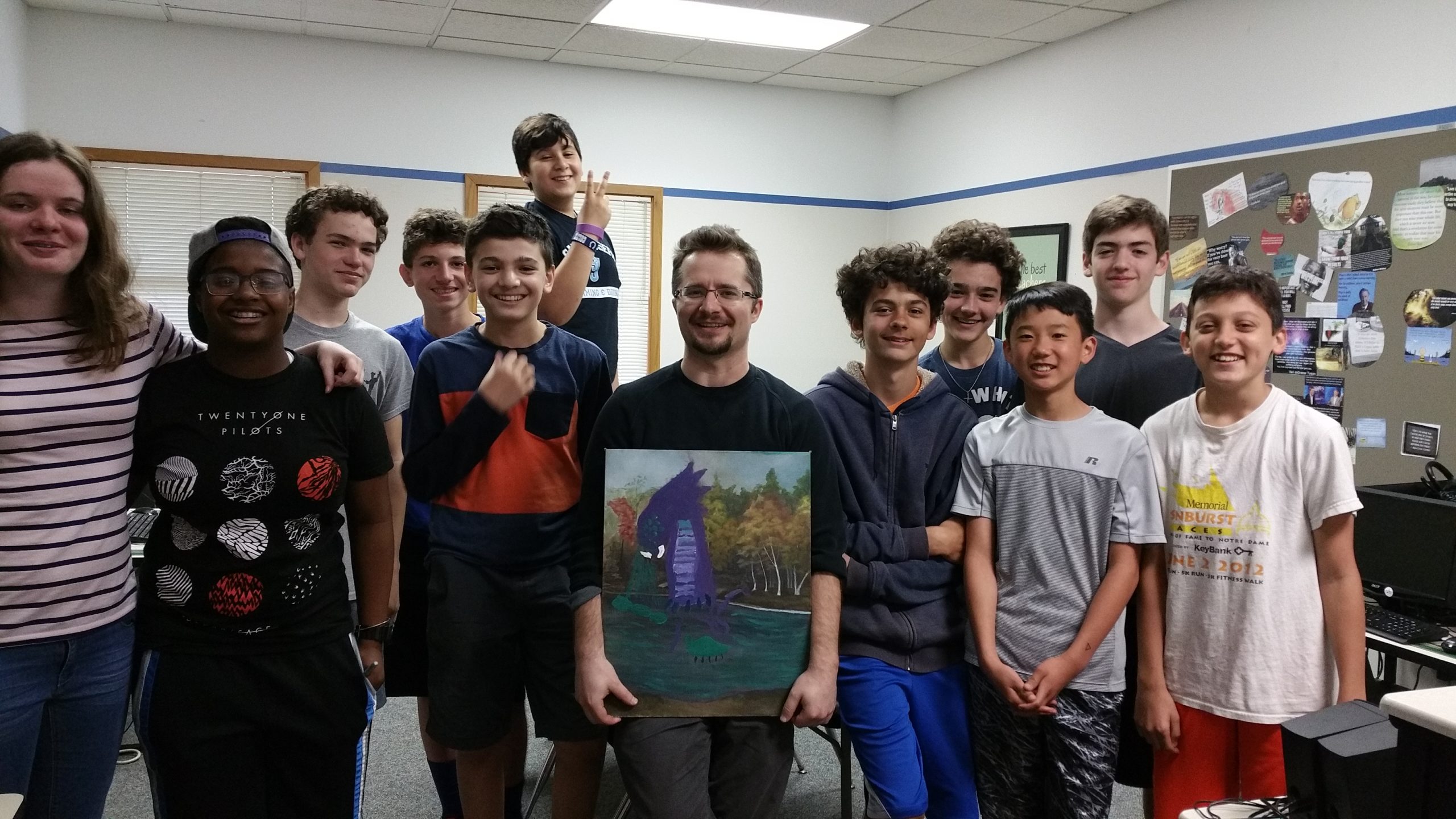
League of Legends Club made me a painting of an in-game boss you defeat — when I announced I was leaving.
Rebranding Montessori Live
Our rebrand project with Montessori Live, the first online certification system for Montessori teachers, flowed out of our deep involvement with Montessori Edison Lakes. Because we came in speaking the same language, we were quickly able to determine the scope of challenges and what precisely they needed help with.
We settled on three main priorities:
- The brand needed a modernized design, look, and a unified marketing narrative.
- The website needed to be completely redesigned to match these new standards.
- Their third party e-learning environment would need the same treatment, if possible.
Creating a new company logo is an iterative process, but it’s a lot of fun for those involved. There’s something special about being a part of the process of branding your organization as an employee. It’s a visual representation of what you stand for. It gives you more pride and ownership in every bit of work you do. We get a lot of joy out of seeing this happen with the passionate business owners and teams we work with. The goal of the process is to end up with something everyone loves and can be proud of. There’s no settling when it comes to creating your company’s logo. Everyone involved needs to feel good about it, including us!
We begin every rebranding process getting everyone on the same page about what constitutes good design. In the process, we’re able to align our expectations, revisions, and final outcome. During the educational portion of our process, we learn everyone’s likes and dislikes. These initial discussions, along with more direct follow-up questions from us, inspire the first round of concepts. The goal is to start broad and refine with each iteration. On this project, we ended up starting out headed in one direction, and the discussions that followed led in another, with new and unexpected discoveries with each round.
Round 1
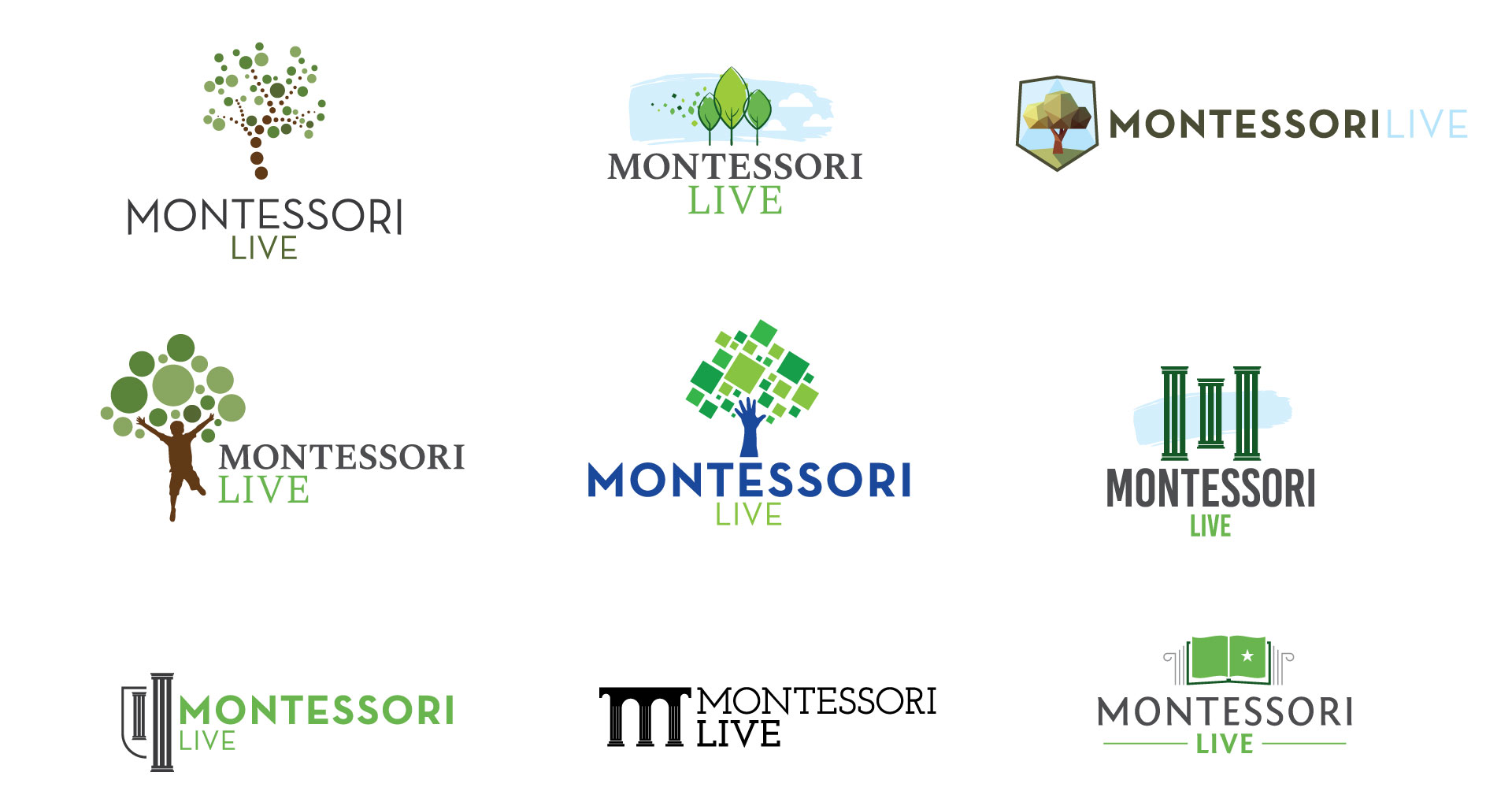
We had a lot of creative freedom at the beginning, and initially pulled inspiration from all over the education industry. While we found lots of trees, hands, shadow children, books, and shields, Montessori Live wanted to retain the pillars from their original logo. We added the pillars in a few of the concepts, even though we thought it’d be challenging to make them fit within the modern design aesthetic we were trying to encourage. Some of those variations are in the top row below:
Round 2
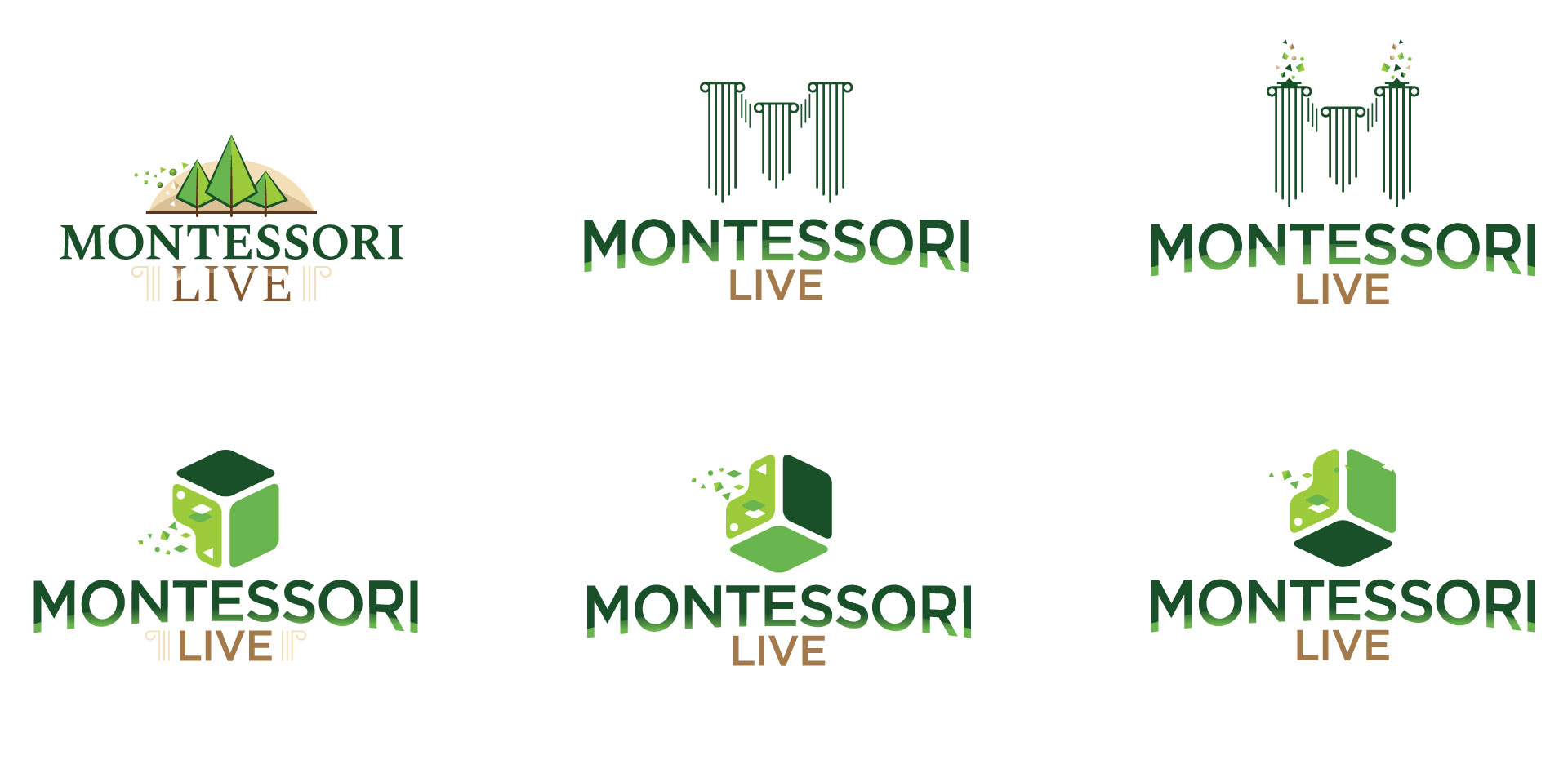
The first set of concepts gave the Montessori Live team a lot to think about. They still wanted to see an evolution of the pillar concept, but we also asked them to branch out and consider other possibilities. Things started to get interesting when they riffed on the theme of well-known Montessori learning materials, of which the cube is one of the most fundamental and ubiquitous. We made a few variations on small pieces gravitating towards a fully-formed cube would stick–see row two, above–but our journey was just beginning.
They asked us to make something involving the famous Pink Tower, below, which was developed by Maria Montessori and is standard in every Montessori classroom. Once their team started thinking of other common Montessori materials, we were off to the races. Their team also proposed working with Nienhuis Beads, which are also standard in all Montessori classrooms as a tactile way to introduce elementary mathematical concepts and especially decimals.
We thought it’d be a powerful visual to take an individual strip of the beads and drop them into water, thus creating a ripple. Metaphorically, this represented Montessori Live maintaining the traditional core values of Maria Montessori–the bead–while they try to disrupt the status quo of the industry by offering an online certification option–the ripple. Now we’re looking at something fundamentally different than the previous round:
Round 3

The discussions after this round led to a more focused mission statement for us to try to encapsulate visually: Montessori is all about finding harmony within the analog world–in other words, nature. We ended up with a lot of variations:
Round 4
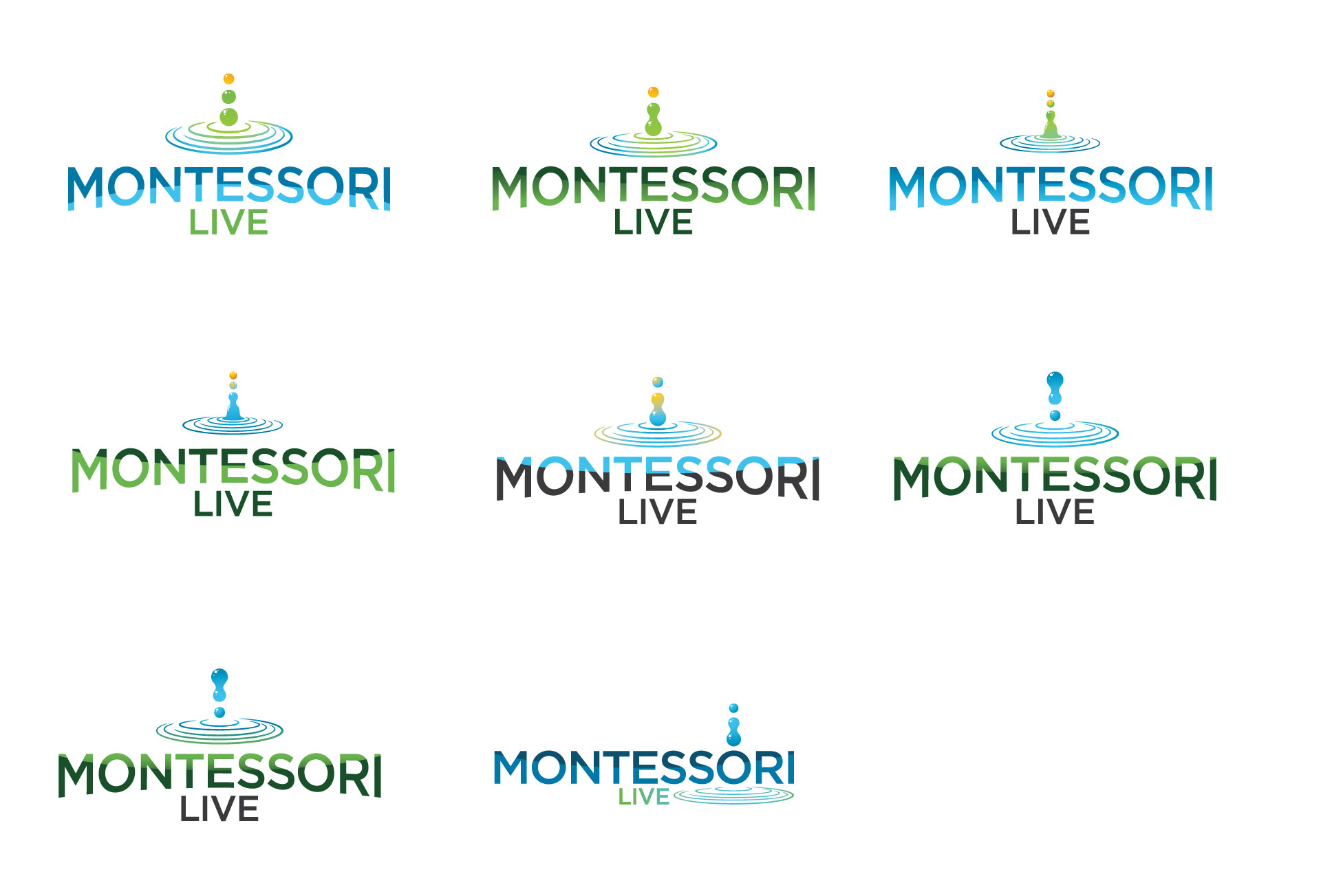
The beads have evolved to looking like water droplets, which is a bit of a logo cliche. We agreed it made sense to try to turn the ripple into a wave.
Round 5
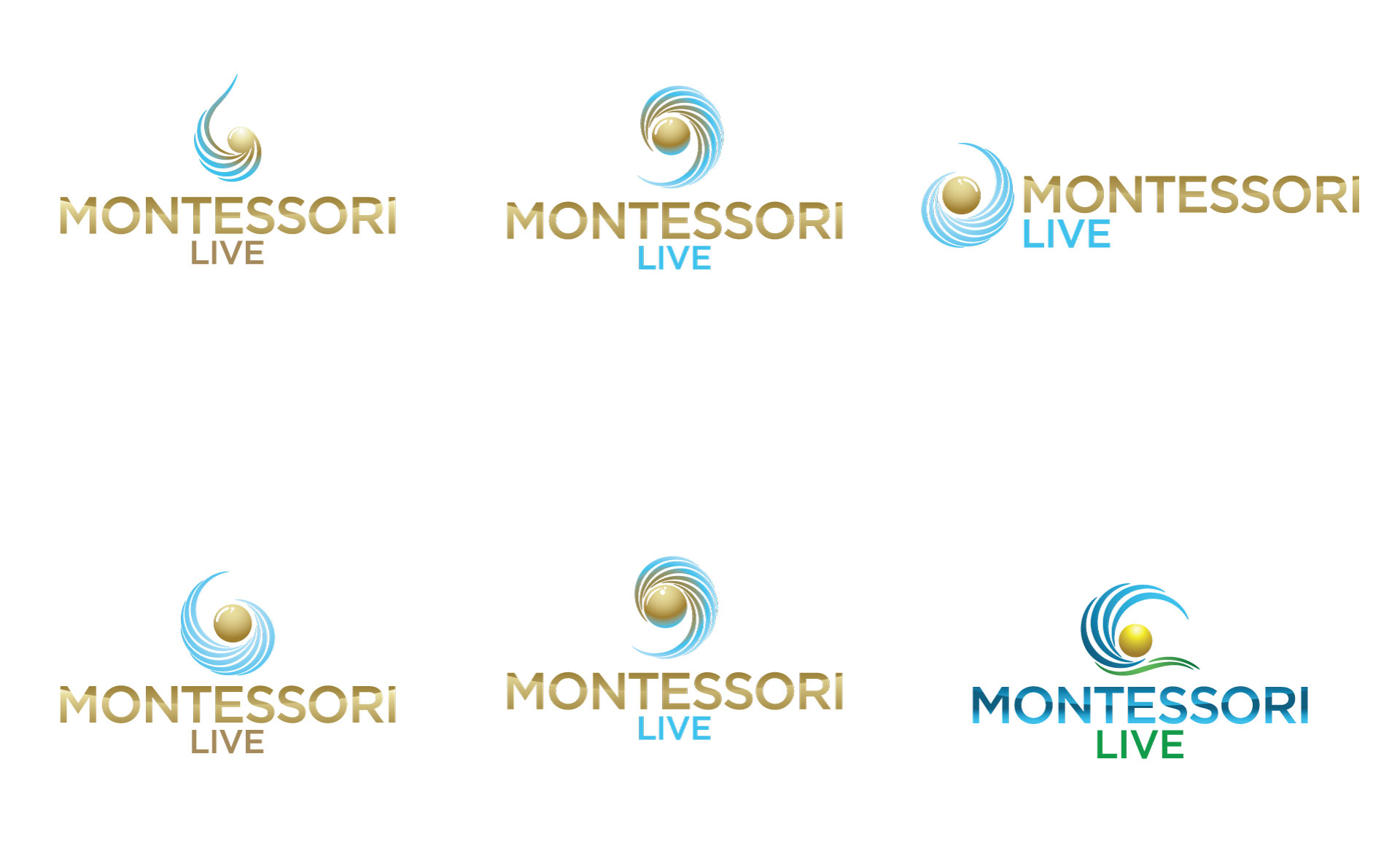
By the fifth round, we were solid on the bead and wave concept, but needed to mold the two into one. We wanted the bead and the wave to appear in the same visual universe, if you will. This would represent the kind of harmony at the core of Montessori Live, and combine all the other cool metaphors we were going for.
And then there were two.
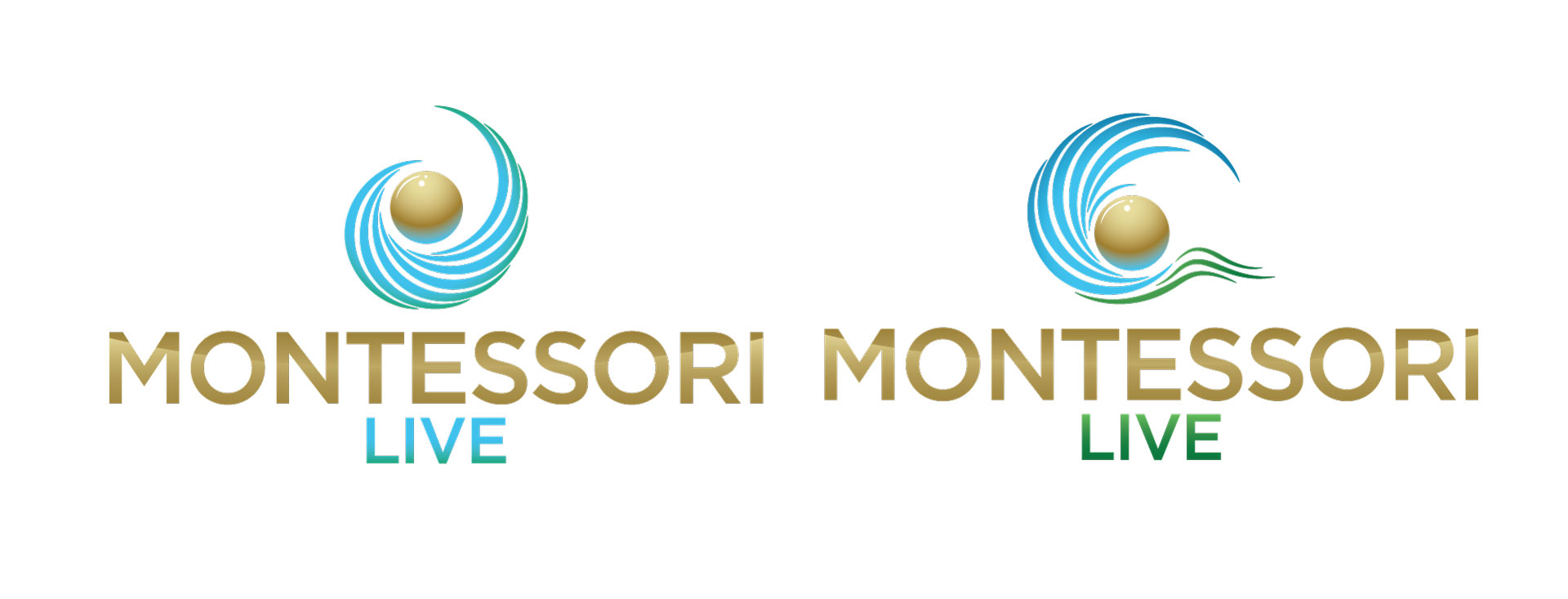
Finally, we were down to two. The variation at left was the clear winner; their team found the variation at right a bit much. Now we just had to add some polish to the winner and create a repository of new digital assets to match.
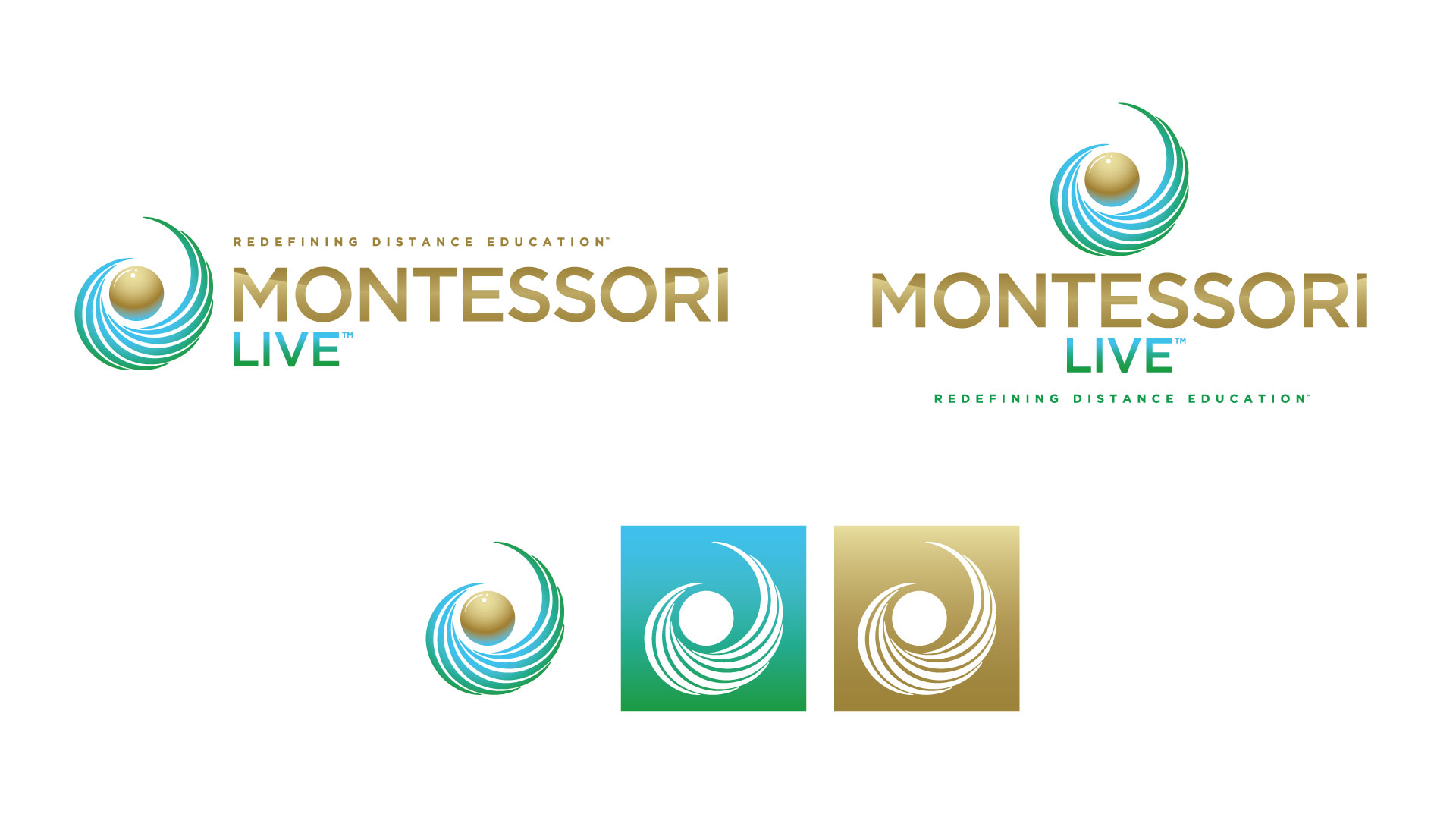
One of the biggest tangible benefits of investing in a rebranding project is that you gain customizable branding assets that look good on everything. The majority of small businesses, nonprofits, and schools we encounter tend to have one or two low-res image files given to them by a marketing agency years in the past. Updated digital assets offer flexibility for digital and print: documents, ads, PowerPoint templates, contracts, business cards, merchandise, website, social media properties…it goes on and on.
Above, you’ll see a horizontal banner logo, a vertical logo, and then 3 social media icon variations. We also provided a large repository of document templates, a newly designed student handbook, three different types of business cards, updated certificates and diplomas, a brochure, a one-page handout, and even e-mail signatures for staff members.
All of which can be resized, used on any background, and integrated easily into anything they want to their branding to appear on.

